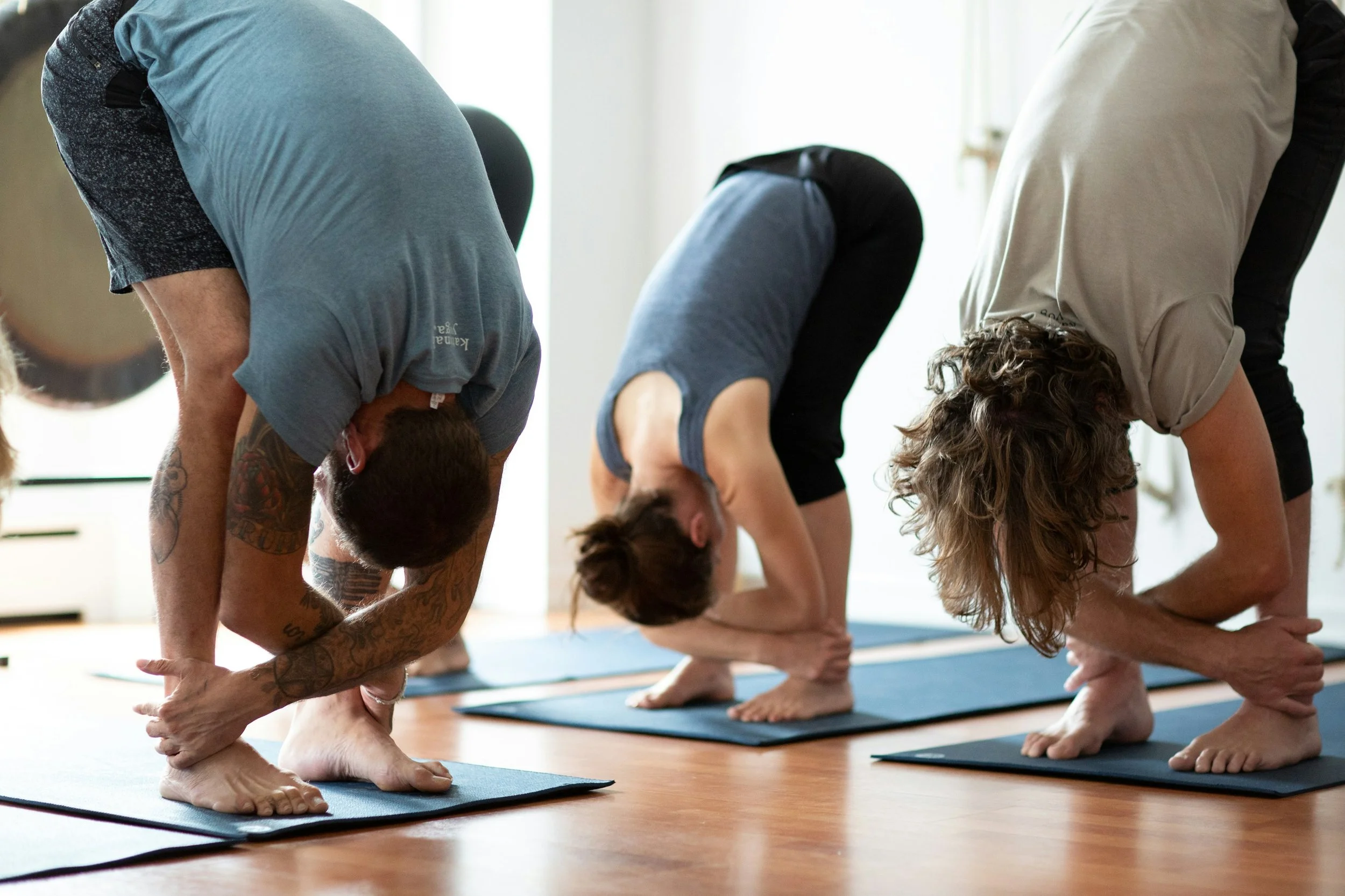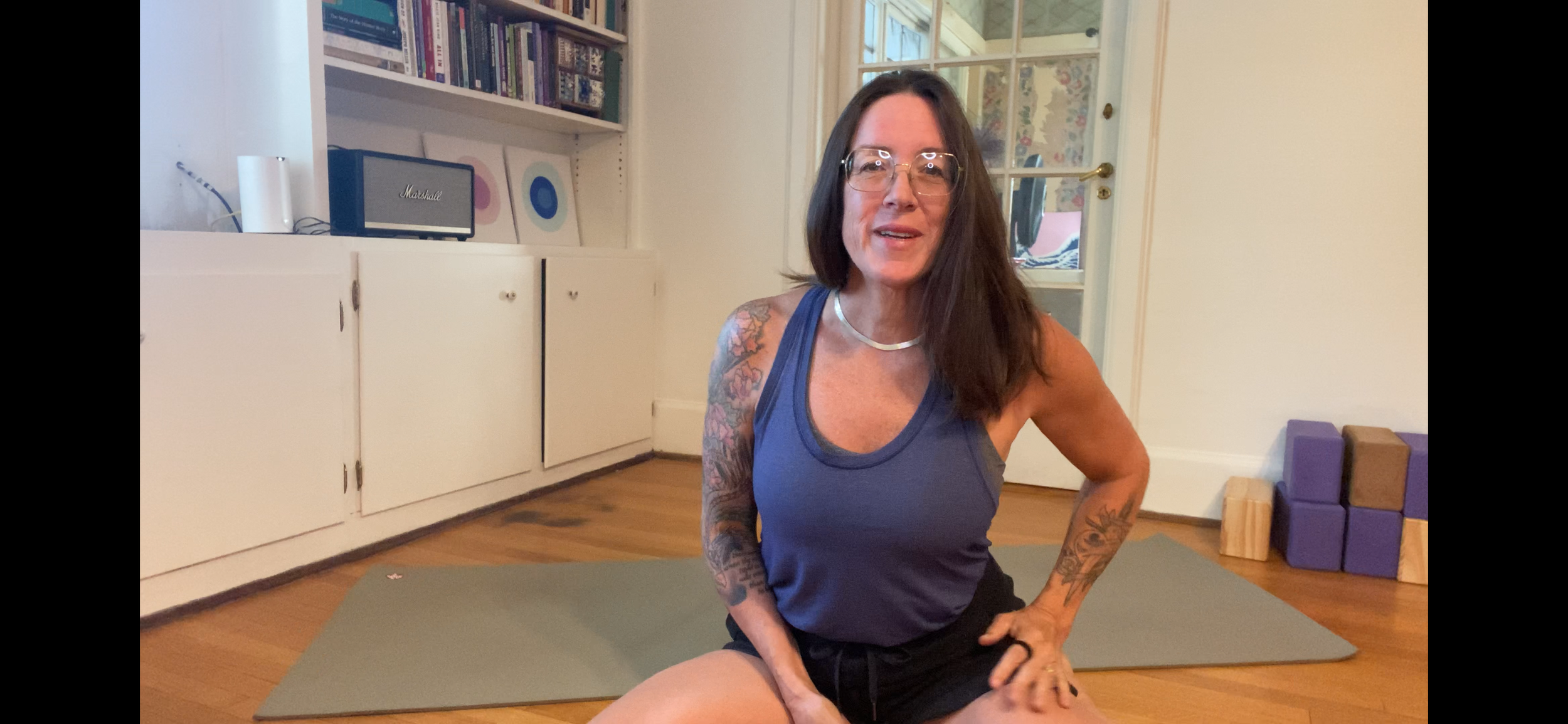The Good Kind of Hangover
Hangs are a staple of our asana practice. They substantiate the first floor of the body, which is what gives us our mobility, stability, and our virility. Without substantiating the first floor of the body, nervous system regulation through more cognitive means will be more challenging.
If you’ve been to class in the last month, you may have noticed that we have been spending more and more time hanging over. (In the Katonah lexicon, we call a forward bend, a hang.) It was as if the change of seasons or maybe the holidays shifted us from lots of lunging to contemplating the unique perspective of having (or not having) both of our feet squarely under us.
My dad infamously (or maybe ironically) used to say to me that we vote with our feet. I say infamously/ ironically because he voted for a new wife and new kids and walked himself on his two feet to Cleveland when I was twelve. I used to have no idea of the actions-speak-louder meaning of that phrase, and I’ve never heard it since, even in all the years I’ve spent working with the body. But so it is hanging over with our feet under us, ass over tea kettle, that we have been spending a lot of our time in classes. I sometimes look at my feet when I’m there and say, “What are you voting for today?” I’m the only one who gets the joke.
Winter is the season for hangs though.
In harmony with nature, in winter, it is the time to help our waters fall into the ground to gestate and incubate. And hangs facilitate the flushing of the kidneys (and adrenals) down into the legs. They give you the arch of your foot, they will (eventually) fix a bunion, they open the sacrum, teach you how to get out of your knees, and on and on. But mainly, it is the waters of winter and letting whatever delicious stirrings we have going on inside us incubate and ferment, so they are ready to start peeking their way out of the ground when the time comes.
It is the time for introspection. And hangs and folds give us that time.
In the kinesphere, a hang is like a kind of bow, a gesture of humility; with our head down inside the sacred cave of our legs or arms, we hear the echoing reverberation of our breath. We can encircle ourselves with our imagination, and, in doing so, find our center. Staying in a hang longer, just like staying anywhere longer, like staying a little longer after dinner is cleared, means you are there when the juicy bits start to emerge. But to stay longer, you need options. Like the commas I just used in that previous sentence. Options let us explore and open the spaces, articulate ourselves more completely, and get to know ourselves better. So we have lots of options for exploring hangs.
Hangs, in particular, also cultivate tenacity. I recently had a conversation with a friend who challenged me to reject the common narrative that aging inevitably leads to breakdown. He reminded me that breakdown can be a gateway to rebuilding and that osteogenesis—the process of bone formation—continues well into our eighth decade. Breakdown can be the entry into a deeper, lasting strength. And is it exactly the weight-bearing, foot-pressing of hangs that builds a bone-deep kind of strength. Not the kind that atrophies after thirty minutes of inactivity, but the kind that accretes and supports the bearing and living of life.
If you want to stop by, we’ll be there, hanging out.
Learning Module: Folding the Pelvis
stand with feet hip-width apart (or use a folding chair)
bend your knees and stick your butt out behind you
find the ball and the heel of each foot and then find the middle
pull your buttock bones apart left and right
let you body drape over the legs
















Maybe it looks like this— yoga in living rooms, vegetables shared between friends, warmth, community, and practices that connect. Maybe it’s in the small revelations of finding your knee in your armpit, or your fingers woven behind your head…